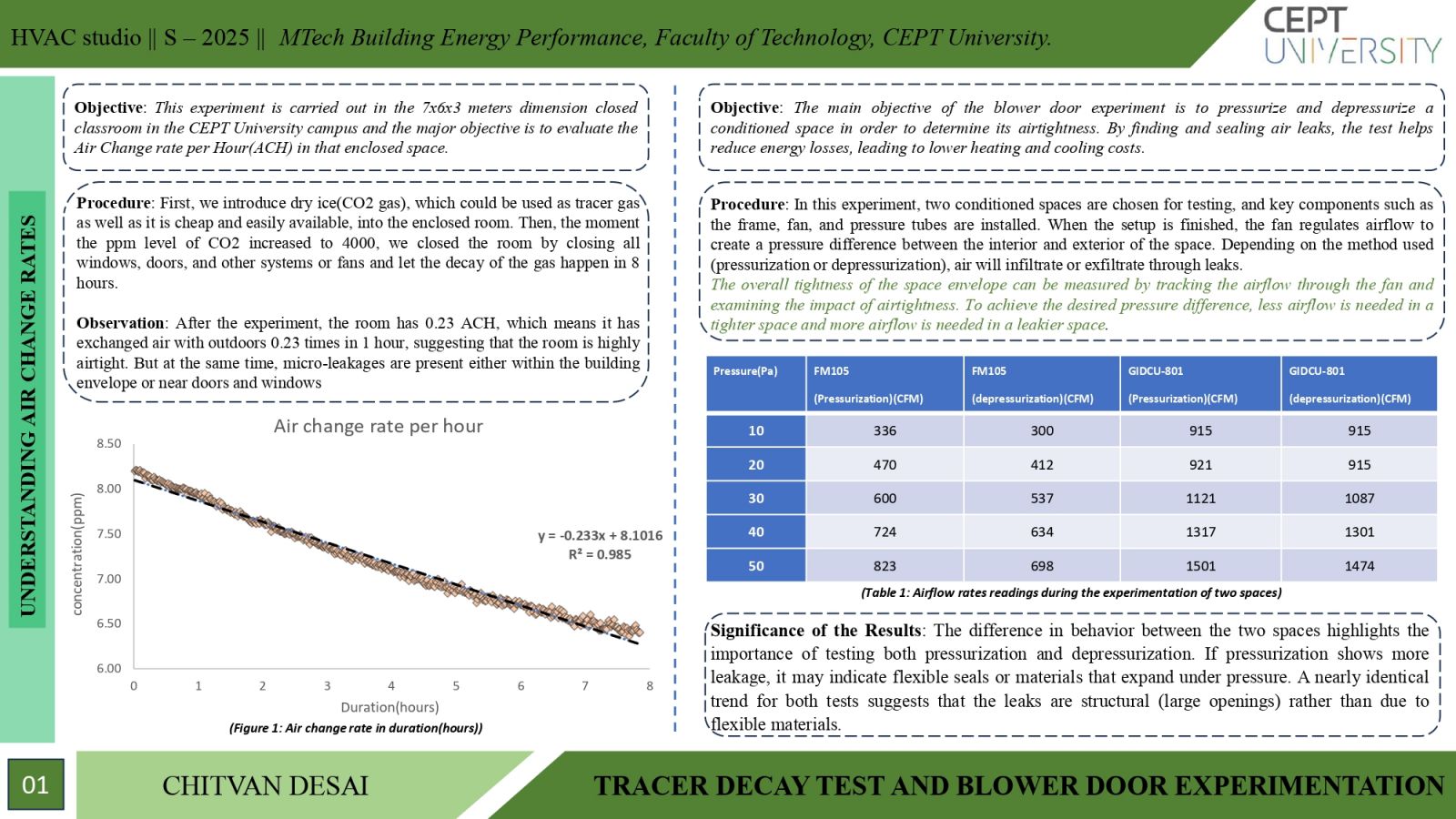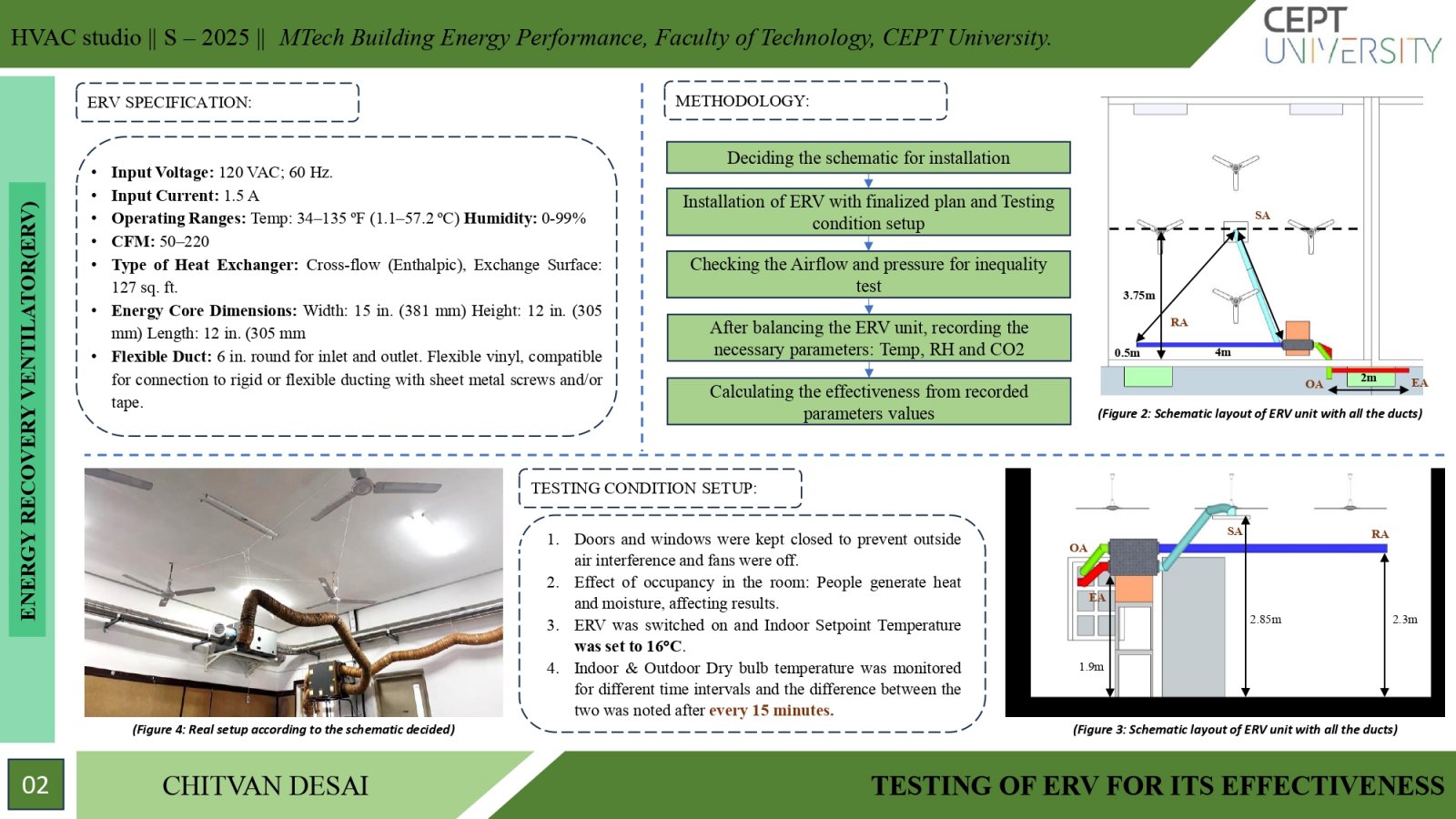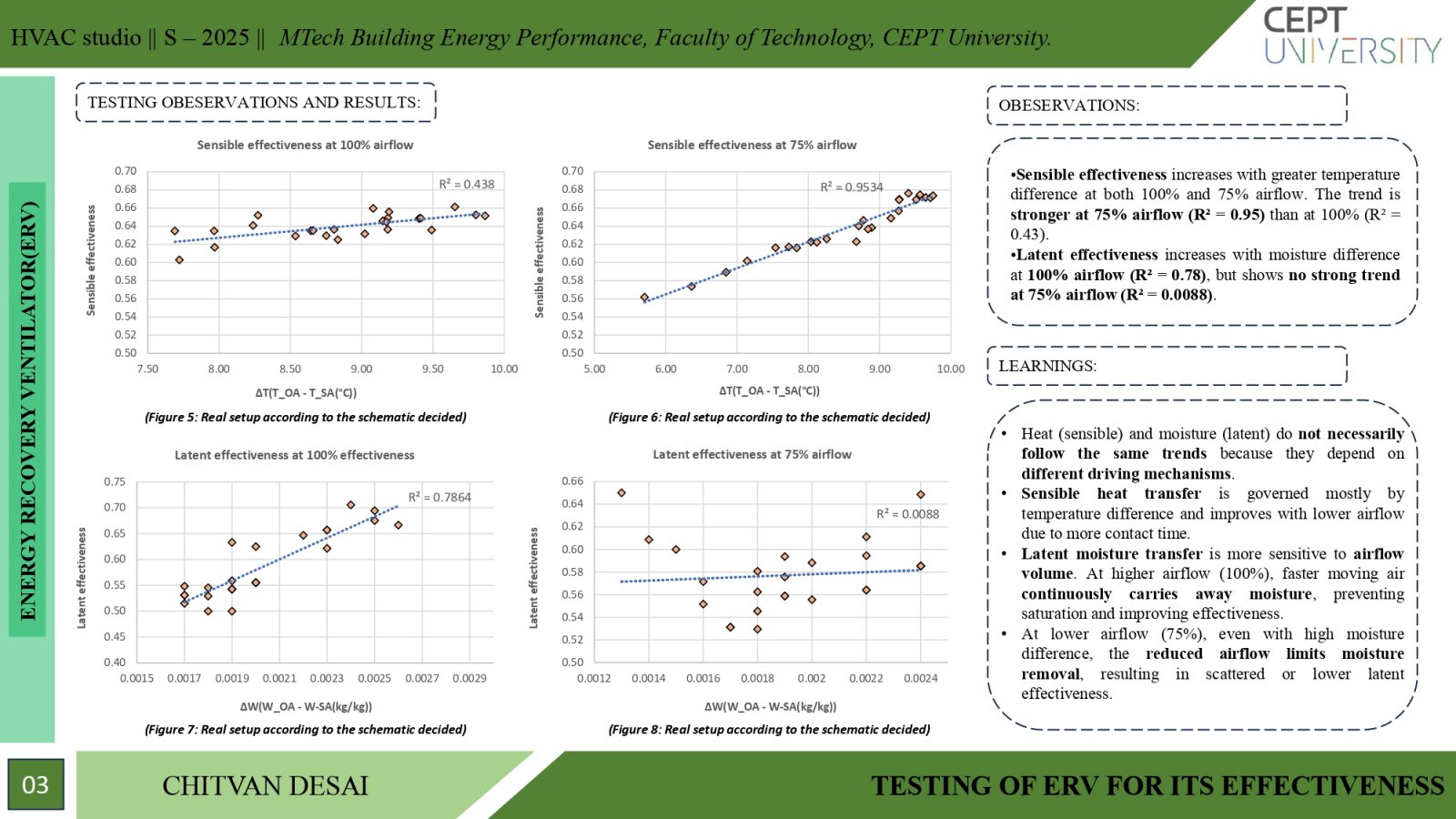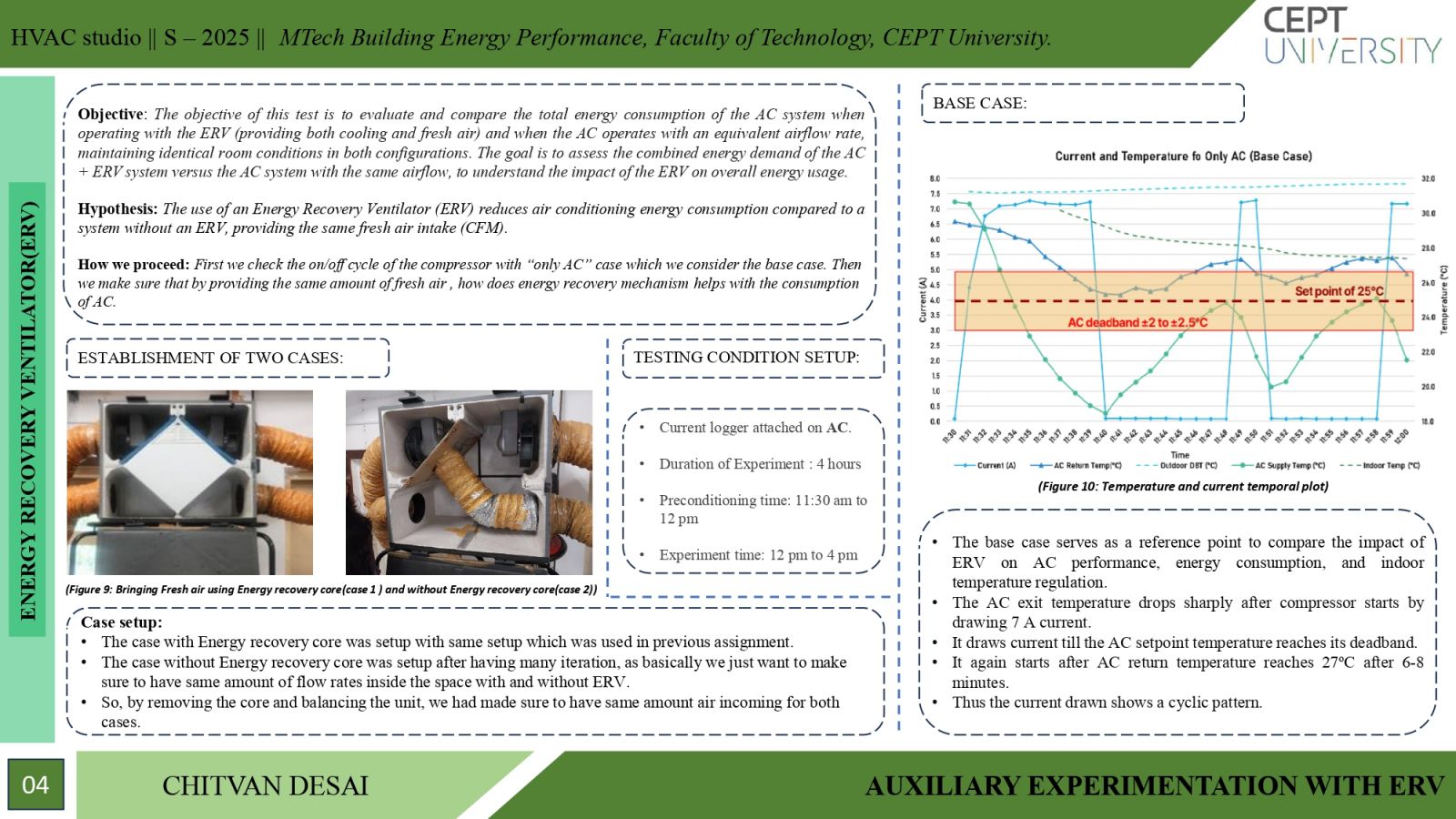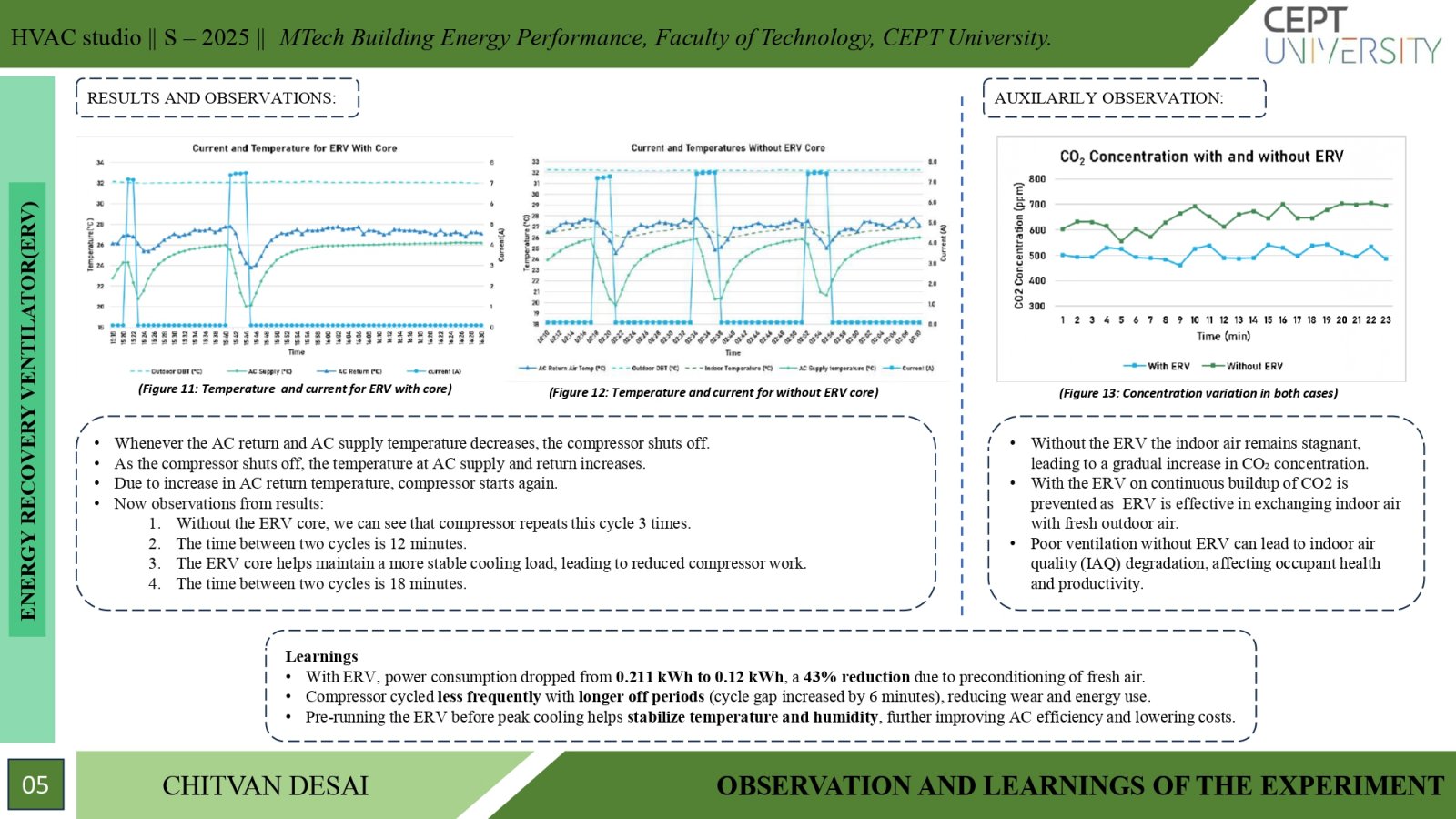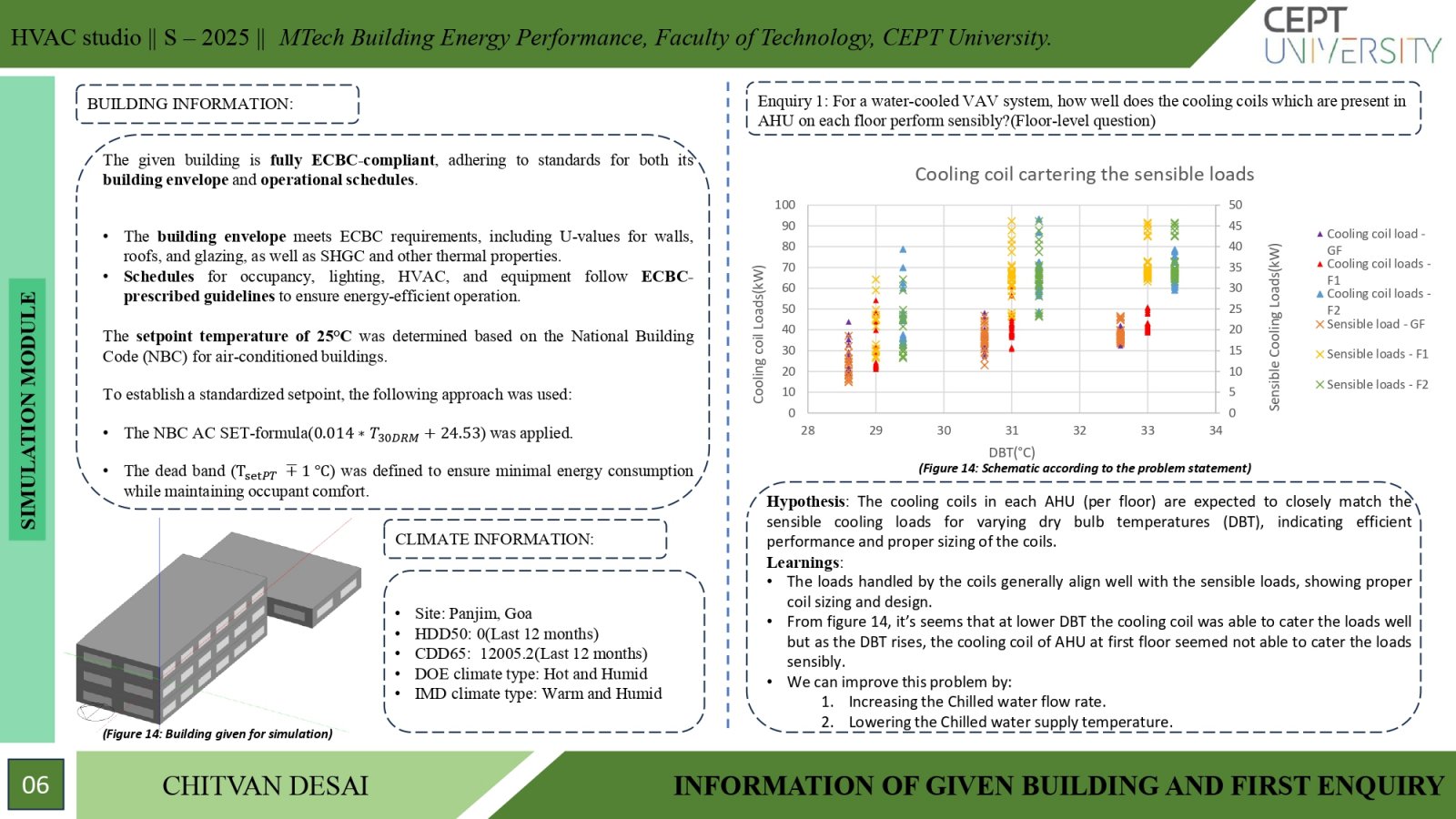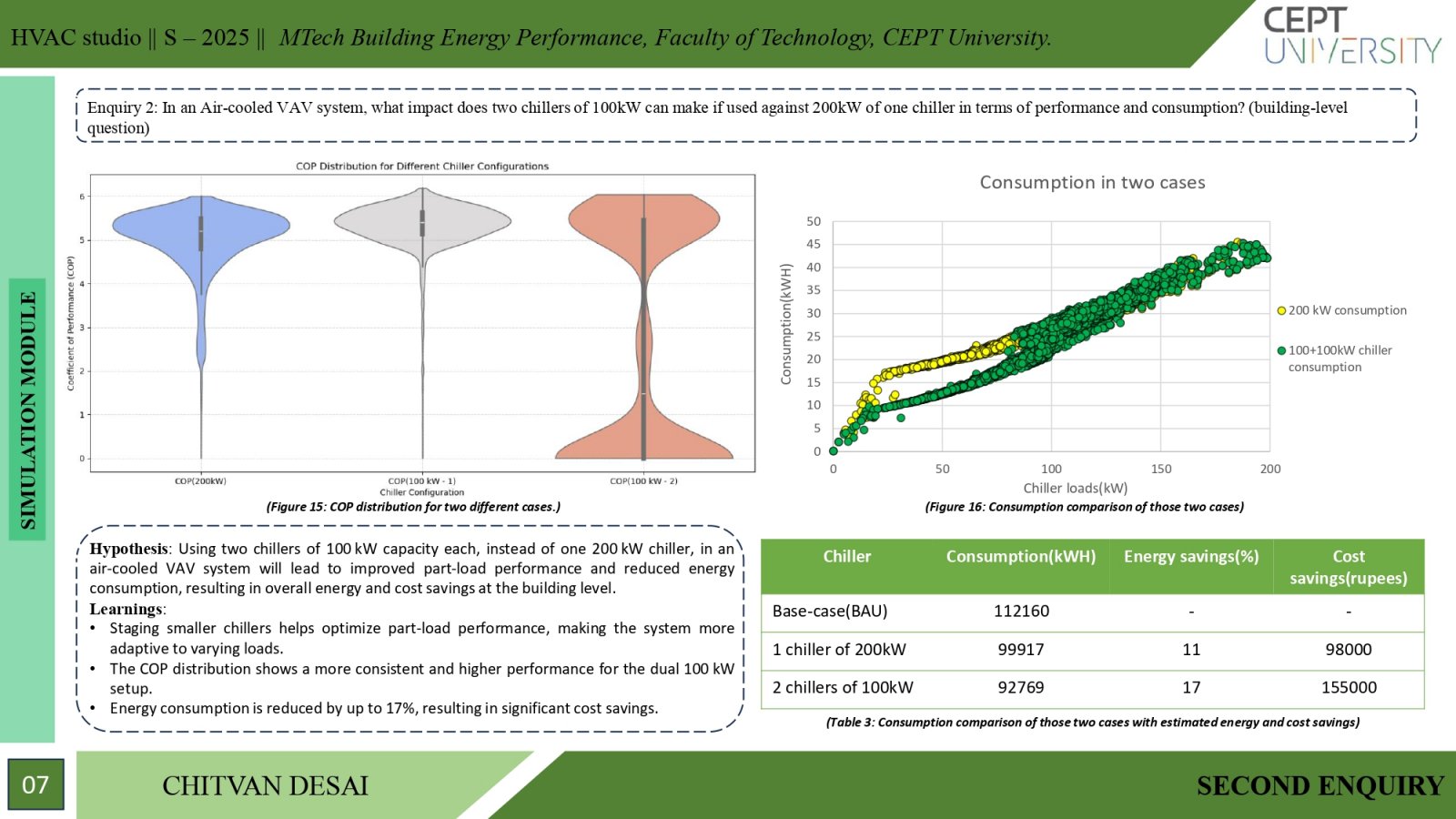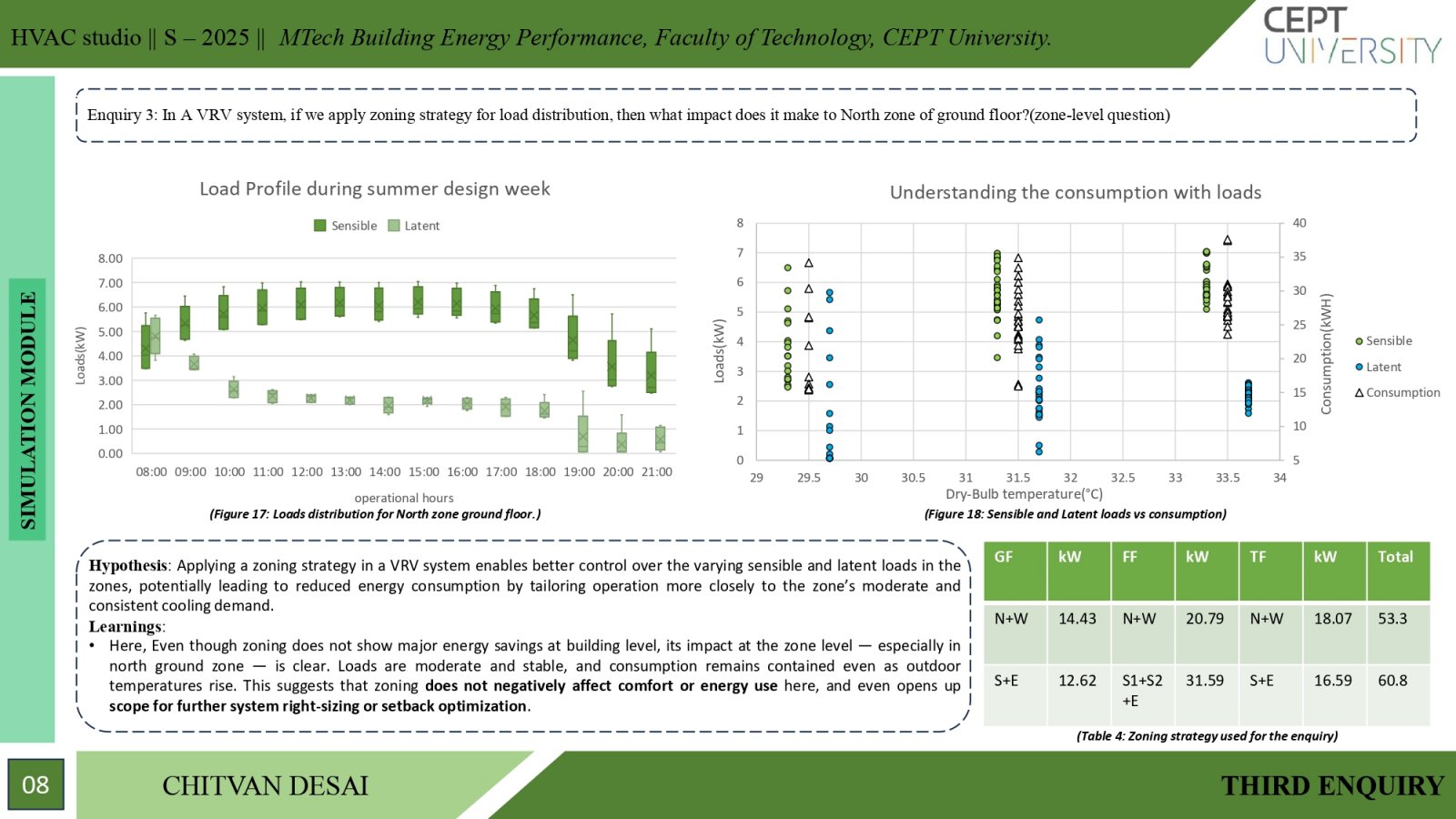Your browser is out-of-date!
For a richer surfing experience on our website, please update your browser. Update my browser now!
For a richer surfing experience on our website, please update your browser. Update my browser now!
The HVAC Laboratory offered hands-on learning of ventilation and energy efficiency through methods like tracer decay and blower door tests to quantify air change rate, revealing how even micro-leakages impact envelope performance. ERV testing highlighted the differing behaviors of sensible and latent recovery and demonstrated up to 43% reduction in AC energy use. Using EnergyPlus simulations, strategies like zoning, setback, and system staging were explored to optimize comfort and reduce unmet hours. The lab bridged theory and application, developing skills to evaluate and design HVAC systems.
